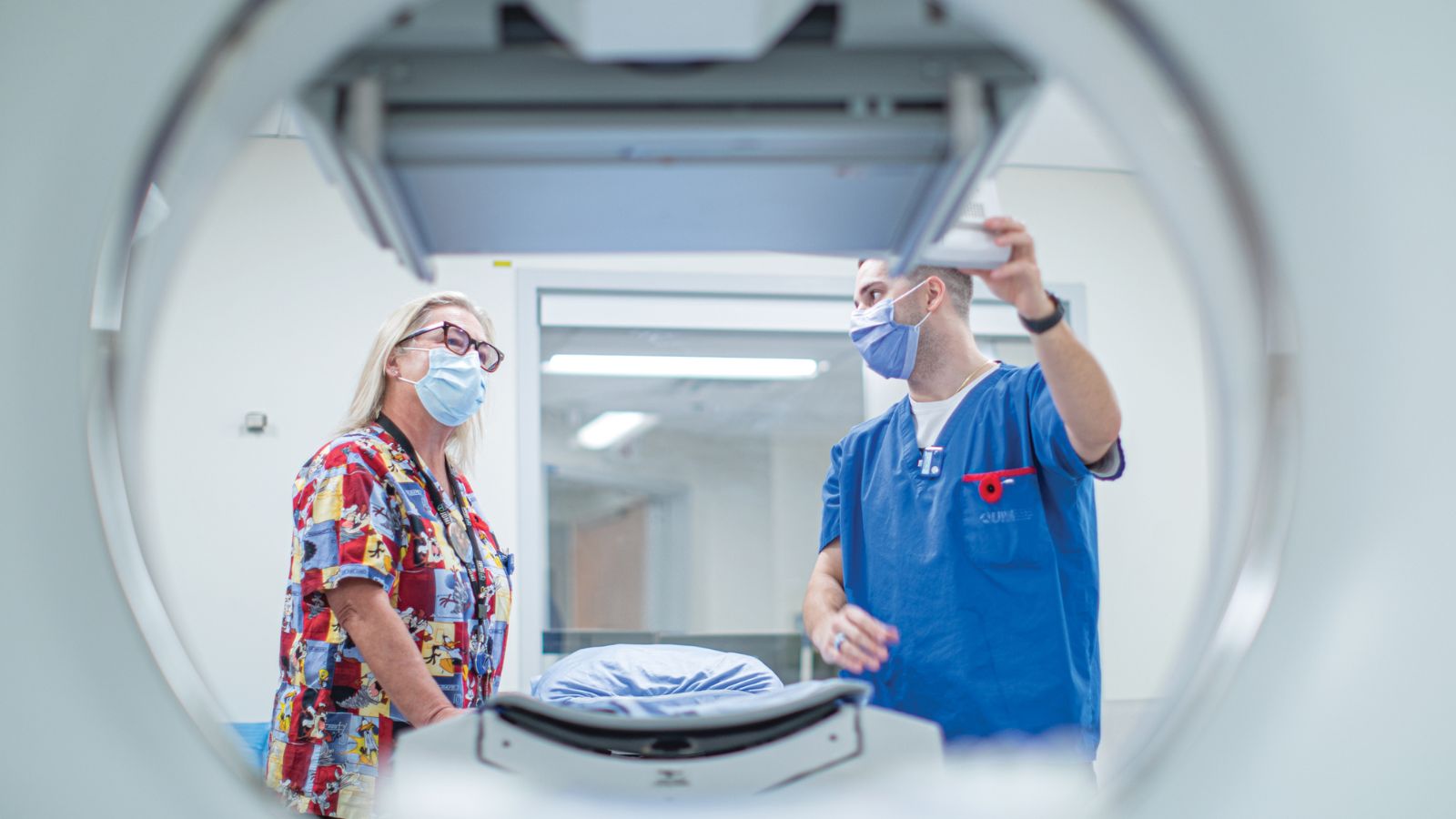
By Wendy Haaf
Cancer incidences have been declining in Canada since 2011, save for one striking exception: HPV-related cancers. The human papillomavirus (HPV) is a sexually transmitted virus that’s responsible for more than 99 per cent of cervical cancers, but it’s also a main contributor to back-of-the-throat cancers, which have been rising rapidly. This type of oropharyngeal cancer – which refers to the area that includes the tonsils and the base of the tongue – “is the cancer we see most frequently in the head and neck division at University Health Network (UHN),” says Dr. John De Almeida, a head and neck surgeon in the Sprott Department of Surgery.
While the five-year survival rate for these cancers is close to 90 per cent, the side-effects of treatment can be debilitating. Currently, it’s standard practice to use radiation to treat not only the tumour itself but also the lymph nodes on both sides of the neck, in case cancer cells have travelled from one side to the other. This can cause severe dry mouth, changes in taste, difficulty swallowing and dental problems. And because most patients are in their 40s and 50s, they face the prospect of living with these issues for decades.
Dr. De Almeida is hard at work finding ways to ease these side-effects. For one thing, he’s one of just a few specialists in Canada able to offer some patients a different method of treating the original cancer. “We use a surgical robot with instruments that we can lead through the patient’s mouth,” he explains. The system’s miniaturized instruments, manoeuvrable arms and 3D cameras allow Dr. De Almeida to remove early-stage tumours and lymph nodes with tremendous precision and minimal damage to surrounding tissues. “In certain patients, we can even avoid radiation therapy, chemotherapy or both,” he says.
– Source: CDC70%
Oropharyngeal cancer cases estimated to be caused by HPV.
Tracing a path
Even with this form of minimally invasive surgery, “we struggle with whether or not there might be microscopic cancer cells in the lymph nodes on the opposite side of the neck,” Dr. De Almeida explains. Until recently, clinicians assumed a route existed in the lymphatic network for fluid and cancer cells to travel not just down one side of the head and neck, but also across the jaw and down the other side. However, Dr. De Almeida questioned whether that was true. And if it wasn’t? Then some patients could be spared such extensive treatment of the lymph nodes.
Dr. De Almeida pioneered techniques that enabled him to test this hypothesis, using a tool that’s already widely used in treating other cancers in a novel way. The technique underpins a surgical procedure called lymph node biopsy, a method of identifying those lymph nodes most closely connected to a tumour so they can be tested for the presence of cancer cells. Now commonly done to help gauge the extent or stage of cancers such as melanoma, historically, sentinel node biopsy hasn’t been applied to oral cavity or throat cancers.
What Dr. De Almeida decided to try was similar to sentinel biopsy, minus the biopsy: using radioactive material to trace the path cancer cells could potentially take. This is known as lymph node mapping. The first step is injecting this radioactive tracer into the tumour.

Creating a better picture
However, because head and neck cancers are much more technically difficult to access than, say, breast cancer, Dr. De Almeida had to develop special methods of injecting them. In some cases, for instance, a tiny camera mounted on a fine tube (known as an endoscope) is threaded “through the nose to visualize the tumours of the back of the tongue and administer those injections,” he explains.
Next, an imaging technology called SPECT, or single-photon emission computed tomography, is used to trace the path the radioactive compound takes. “The camera has two heads, 180 degrees from each other, that detect the radiation,” explains Judy Gabrys, UHN’s Nuclear Medicine Clinical Supervisor. “The camera moves around the patient and then draws a 3D picture.” Since SPECT doesn’t yield a clear image of the surrounding anatomy, “when the patient is on the bed, we move them into the CT portion and do a CT scan. Then the CT scan and the nuclear medicine scan are merged together,” Gabrys says.
Voila: it’s possible to see whether cancer cells have a path to travel from one side of the neck to the other. If they don’t, Dr. De Almeida says, “we treat these patients much more conservatively, because this test gives us a high degree of confidence the cancer doesn’t have a potential route to get there.”
Putting the treatment to the test
The next step: launching a large-scale trial to test the strategy in patients with T1 to T3 stage tumours that sit on one side or the other of an invisible line through the middle of the jaw. “It’s a multi-institutional, multinational study that we’re leading, and we’re doing it in conjunction with a collaborative group,” Dr. De Almeida says.
Spanning dozens of centres in several countries, the project is being sponsored by the Canadian Cancer Trials Group and the U.S. National Institutes of Health. “It’s a Phase 3 randomized controlled trial. Basically you flip a coin to see whether someone gets the new treatment or the standard treatment,” Dr. De Almeida explains.
“We’re looking to recruit 500 patients and follow them to see how they do from a cancer perspective. If the new treatment is superior in this trial, it could potentially change practice worldwide,” he adds. And that, in turn, could improve the long-term outlook for many of the hundreds of thousands of people around the globe who are diagnosed with HPV-related cancers each year.
This article originally appeared in the 2023 issue of the Sprott Department of Surgery magazine. Read it here.
